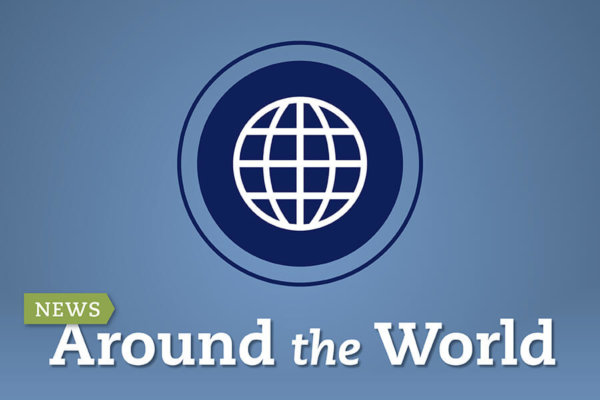WASHINGTON — The 16th annual report on diocesan compliance with the U.S. bishops’ “Charter for the Protection of Children and Young People” shows a significant increase in the number of abuse allegations over last year’s report because of additional claims received in five New York dioceses after implementation of their Independent Reconciliation and Compensation programs in the last year.
Released May 31, the report for audit year July 1, 2017, to June 30, 2018, states that 1,385 adults came forward with 1,455 allegations. In last year’s report charges were raised by more than 650 adults and 24 minors.
More than half of new allegations reported in the latest audit year, or 55%, are alleged to have occurred or begun before 1975; 41% occurred or began between 1975 and 1999; and 1% (two allegations) occurred or began after 2000.
Twenty-six of the new allegations involved current minors –12 males and 14 females — and came from three different dioceses, the report said. As of June 30, 2018, three of these claims were substantiated and the clergy were removed from ministry; seven were unsubstantiated; three were categorized as “unable to be proven”; investigations were still in process for six of these allegations; two were referred to a religious order; two were reported as unknown clerics; and three were not claims of sexual abuse, but were boundary violations.
The report was issued by the U.S. Conference of Catholic Bishops’ Secretariat of Child and Youth Protection and is based on the audit findings of StoneBridge Business Partners.
“These current allegations point to the reality that sexual abuse of minors by the clergy should not be considered by bishops as a thing of the past or a distant memory,” said Francesco Cesareo, chairman of the all-lay National Review Board, which oversees the audits. He called the 26 new allegations by current minors “concerning.”
“Any allegation involving a current minor should remind the bishops that they must rededicate themselves each day to maintaining a level of vigilance that will not permit complacency to set in or result in a less precise and less thorough implementation of the charter,” he said in introductory remarks to the report.
Cesareo pointed to areas of concern that he said must be addressed, such as “poor recordkeeping of background checks; failure to train or background check clergy, employees or volunteers who have contact with children; a high percentage of children not trained, especially in religious education programs; and lack of cooperation by parishes in the implementation of safe environment requirements.”
If parishes are unable to implement the charter “as fully as possible” because of a lack of resources, he said, parishes — and dioceses — should find ways to collaborate with one another, including sharing resources.
In some dioceses, he said, there is a “lack of diligence” and a “laxity” that is putting children’s safety at risk. He was dismayed that “we have still not achieved 100% participation” in the auditing process. He also called for a “more in-depth” audit process and a revision of the charter that “will incorporate new practices, such as parish audits,’ which he said the National Review Board has been recommending for some time.
“It should be pointed out that, given the current climate within the church, StoneBridge noticed a heightened sense of urgency and focus in many of the dioceses that were visited during this cycle,” Cesareo said. “This was evident in the active review of priest files, the release or updating of lists of alleged abusers, and greater emphasis on discussion and transparency with parishioners in individual dioceses/eparchies.
“This is a welcome change which must be sustained going forward rather than a one-time response to the heightened sense of scrutiny if a lasting cultural change is to take place,” he said.
The “current climate” relates to several events of the last year, including allegations of sexual misconduct with minors and seminarians, some decades old, against former Cardinal Theodore E. McCarrick, which led to his church trial last fall and the Vatican dismissing him from the clerical state in February.
Also, last August a Pennsylvania grand jury issued a report on the state attorney general’s months-long investigation into six of the state’s Catholic dioceses. The probe covered a 70-year period starting in 1947 and linked more than 300 priests and other church workers to over 1,000 abuse claims during that timeframe. However in the months since that report’s release many have criticized the methodology of investigators.
“While much has been done to ensure survivor ministry and the protection of the vulnerable are core values of the church, improvements still must be made. When it comes to the protection of young people, the question must always be ‘what more can be done?'” Cardinal Daniel N. DiNardo of Galveston-Houston, USCCB president, said in the report’s preface.
“We must continually rededicate ourselves to keeping our promise to protect and pledge to heal. Not once, not twice, but every single day,” he said. “With every action we take, let us all remember to keep the survivor, the child, the vulnerable person, at the center of everything we do.”
The Center for Applied Research in the Apostolate, based at Georgetown University in Washington, gathers data for the annual audit report. StoneBridge Business Partners, based in Rochester, New York, provides the compliance report based visits to dioceses and eparchies and reviews of diocesan documentation.
During 2018, StoneBridge conducted on-site audits of 72 dioceses and eparchies, and collected data from 122 others. All dioceses/eparchies were found compliant except for the Diocese of Lincoln, Nebraska, which, the report said, had not complied with article 7 of the charter requiring dioceses “to be open and transparent” in communications regarding allegations of sexual abuse of minors by clergy, “especially those parishes that may have been affected.”
Three eparchies did not participate: the Syro-Malankara Catholic Eparchy of St. Mary, Queen of Peace, based in Elmont, New York; the Chaldean Catholic Eparchy of St. Peter the Apostle of San Diego; and Holy Protection of Mary Byzantine Catholic Eparchy of Phoenix.
Under canon law, dioceses and eparchies cannot be required to participate in the audit, but it is strongly recommended that they do.
The Lincoln Diocese, in a June 2 statement sent to Catholic News Service in response to the audit report, said it announced the promulgation of new safe environment policies April 2 of this year and at the time time “acknowledged that in November 2018, it was audited on-site by the USCCB to ensure that its safe environment policies and procedures are in compliance with the charter.”
“Citing a 2017 example of allegations against Father James Benton,” the diocese said, “the auditors concluded that the diocese must be more transparent in informing parishes and other church communities who are directly affected by an allegation of sexual abuse of a minor. While the diocese changed its practices in this regard in August 2018, the April 2, 2019, revised policies formally adopt this change.”
In 2017, Father Benton, now retired, resigned as pastor following allegations that more than 25 years ago, he abused two family members. The Diocesan Review Board addressed the claims and referred them the case to the Vatican’s Congregation for the Doctrine of the Faith, which then asked Lincoln Bishop James D. Conley “to take appropriate action,” according to the bishop’s open letter published Aug. 10, 2018, in the Lincoln Star Journal daily newspaper. He prohibited the priest from exercising public ministry and restricted him from being with minors.
Earlier claims that surfaced in 2002 that the priest had inappropriately touched a minor on a camping trip in the early 1980s “was fully investigated by the Lincoln Diocese,” the bishop said, but the “allegations could not be substantiated.
In the new audit report, the CARA data shows that more than nine in 10 alleged offenders, or 92%, identified during the 2017-2018 survey year were already deceased, already removed from ministry, already laicized or missing. Most abuse reported occurred between 1960 and 1990, peaking in the 1970s.
Dioceses, eparchies and religious institutes reported paying out $262,619,537 for costs related to allegations between July 1, 2017, and June 30, 2018. This includes payments for allegations reported in previous years. That payout figure is just under the amount reported the previous year.
Outreach and support was provided to 472 victims/survivors and their families who reported abuse during this audit period. Continued support was provided to 1,542 victims/survivors and their families who reported abuse in prior audit periods. Support may include counseling, spiritual assistance, support groups, and other social services.
The report also notes the ongoing work of the church in continuing the call to ensure the safety of children and vulnerable adults. In 2018, over 2.6 million background checks were conducted on church clerics, employees, and volunteers. In addition, in 2018 over 2.6 million adults and 3.9 million children and youth also have been trained on how to identify the warning signs of abuse and how to report those signs.
Editor’s Note: The full annual report on compliance with the “Charter for the Protection of Children and Young People” of the U.S. Conference of Catholic Bishops can be found at https://bit.ly/2HPjXqz.
– – –
Copyright ©2019 Catholic News Service/U.S. Conference of Catholic Bishops.


